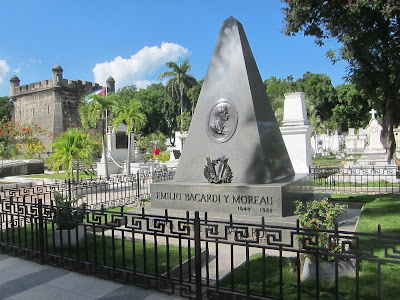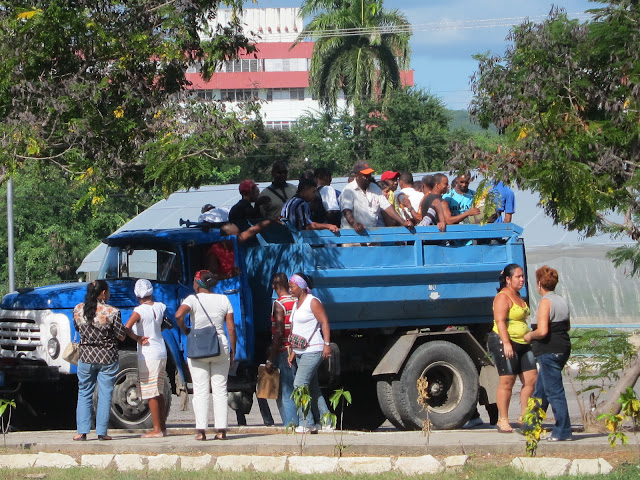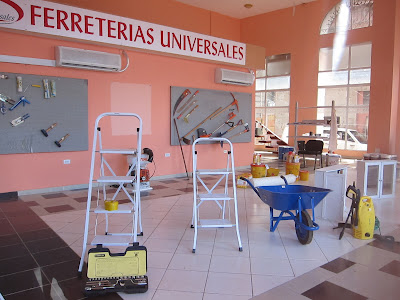Sorry for the delay! We could not post any article during the last two weeks. Well.. Cuba is not the country with the best internet coverage. For exemple, in Santiago de Cuba only one shop offered a working internet access and a very slow one. But that is part of the charm of this Caribbean island! ;)

We started our exploration with the bay of Santiago de Cuba, at the extreme south of the country. This bay used to be protected from piracy by a castle, San Pedro de la Roca (El Morro). It now overhangs Santiago de Cuba's harbour, an oil refinery and a thermoelectric power station.
San Pedro de la Roca Castle
This region played a huge role during the revolution leaded by Fidel Castro. He launched an attack in 1953 on the Moncada army barracks (now a school). The assault failed, he was arrested and incarcerated for this action. Three years later, it is near Santiago de Cuba that he landed from Mexico before starting a guerilla warfare in the Sierra Maestra, the mountain range which dominates the city.
Cuartel Moncada
View from the Balcón de Velázquez
Nowadays Santiago de Cuba is the second biggest city of the country with a million inhabitants. The weather is very hot: the average yearly temperature varies between 25 and 30 degrees! Santiago de Cuba is said to be the cultural capital of the country and the birthplace of about every Cuban music genre.
Calle General Portuondo
Reloj de la Alameda and Customs
Calle José A. Saco
In the cemetery Santa Ifigenia are burried victims of the war of independence, revolutionaries, great Cuban historical figures and also Emilio Bacardí y Moreau, the son of founder of the famous rum distillery who based his first ever rum factory in Santiago de Cuba. More recently in 2003 Compay Segundo of Buena Vista Social Club was laid to rest there.
Tomb of Emilio Bacardí y Moreau
******
In the whole island, hotels are very expensive but an alternative exists: it is called casas particulares for private houses. This system is fully legal but those houses need to be registred, to pay a monthly tax to the state and to declare every new guest to the immigration office.
In fact it looks a lot like a bed and breakfast. Usually, those houses are small: one to three room(s) and managed by a family. A great way to meet the hospitality of local people, have a chat and a unique insight in their middle class way of living. The network of casas particulares is well organized: they are linked by family or friendly bonds. Calling one casa is enough. Even if no room is available, a relative or acquaintance will have one! ;)
Our landlord in Santiago de Cuba, Dulce
The unusual corridor without roof in Dulce's apartment
While traveling, we usually pay attention to local public transportation. And in Cuba buses amazed us! They look like old military transports: some trucks adapted to carry people. And a lot of people can fit in them!
Cuban shops are also unique of their kind. Below, a photo of a hardware store only selling products to entreprises. Pay attention to the quantity of products in display.
******
In Cuba, there are two currencies in use: 24 pesos (currency used by the locals) equal 1 CUC (currency for tourists) which equals 1 U.S. dollars. The dollars is seen as the imperialistic currency so when exchanging USD in CUC, the bank or agency takes immediatly an extra 10% commission. When we wanted to withdraw CUC from an ATM, the bank first changed Euro in USD (to take the expensive commission) and only then to CUC. We learned it too late but better come to Cuba with cash in Euros!!
Also it is very hard to find a good budget restaurant in Cuba. First of all, we did not like the food very much. A lot of unhealthy fried food and the products are not very tasty. It may be so because of the embargo restrictions. Then very few restaurants made us pay the same prices as locals pay.
Prices for tourists can be three to four times what locals pay. And waiters have no problems to bring you the menu with the prices in Pesos and bring you the bill in CUC with prices that do not respect the change rate! And if you ask why such a difference, the waiter smiles and says "tourist price"... After the first time, we negociated all prices while ordering! :/
La Bodeguita in Trinidad, one of the very few restaurants which did not charge us more because we are foreigners















No comments:
Post a Comment